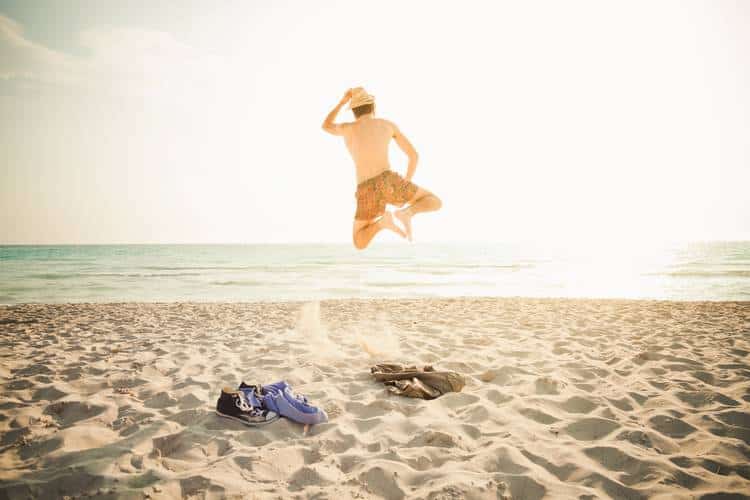Sun, sand, surf, and flip flops – summer is in full swing. Now is the perfect time to capture gorgeous and memorable beach photos. Beaches are naturally beautiful year-round, but during this time of year, bursts of beautiful colors make sunsets more breathtaking. The lighting is more interesting, too.
But there’s an art to taking great summer beach photos. Use these 7 tricks to capture those special moments the next time you hit the sand.
Contents
1.Timing Is Everything
You’ve probably heard that dawn and dusk are the two best times of day to shoot, and that rule applies to beach photos, too. In fact, this rule maybe even more important when taking beach photos because the sunlight is even more dramatic and casts shadows in interesting, beautiful ways during these times.
The evening is a particularly great time to shoot because the light is warmer, and you’ll get subtle hints of color with dramatic sunsets.
The evening and morning are also great times to take photos because you’ll have fewer people to contend with.
2.Use Spot Metering (If You Can)
Some cameras come with a spot metering feature that can help you overcome exposure issues, which are common when shooting in bright light at the beach.
What spot metering does is allow you to tell the camera which area of the photo you want to be well exposed. Other areas of the photo may be overexposed, but your subject will look great.
If your camera doesn’t have a spot metering function, you can try over-exposing a stop or two from the camera’s automatic settings.
3.Use a Polarizing Filter
A polarizing filter is one of the most useful accessories you can buy for your lens. Simply put, a polarizer filters out some light that is polarized. It reduces reflections and glares, leading to darker skies and richer colors.
Polarizing filters can be especially helpful if you’re shooting in the middle of the day or taking photos of the ocean.
Bonus tip: Make sure you use a UV filter when shooting in bright light to protect your lens.
4.Keep Your Eye on the Horizon
Long, unbroken horizons are part of the reason why beaches are such beautiful, attractive places. But they’re also what make taking photos so tricky. If you’re not careful, you’ll wind up with sloping horizons in your photos.
One of the simplest ways to keep your horizons straight is to line them up with the top or bottom of your viewfinder. If your camera has an overlay grid, you can use these lines to keep your horizon straight, too.
You can avoid this issue altogether by taking photos off-center. Taking this approach can make your photos more fun and interesting.
5.Capture Fun and Excitement
The beach is all about fun and excitement, so capture those fun moments – they make the best photos. Have your kids run in the sand or jump in the air. Capture their reaction as you tell them a funny story.
Action shots can be challenging, and you’ll need the right camera settings to make sure your shots are in focus.
Shooting in Manual mode is recommended. The shutter speed should be at least 1/500th of a second, and you’ll want to use a small or medium aperture (between f8/ and f/16). We recommend using autofocus and setting it to continuous focus for best results.
6.Choose Your Settings Wisely
If you’re photographing in bright sunlight, you have the freedom to choose quick shutter speeds and smaller apertures without having to worry too much about blurred images.
Underexposing one to three stops can be helpful if the light is especially bright. This will help reduce the amount of light coming into the camera and preserve some details that might otherwise have been lost, like grains of sand.
7.Try Shooting in Black and White
The beach is a great place to take black and white photos, especially if the sky is dull or overcast. And if the sun is especially bright, you’ll get a nice strong contrast. Using both red and polarizing filters will enhance the contrast while minimizing flare. Try shooting in Aperture Priority (AV) mode for best results.
Armed with these tricks, you can confidently head off on your next beach trip with your camera and come home with some gorgeous photos. Do you have any tips or tricks for beach photos that we may have missed?

About Author
Rachel Noël is a professional photographer and videographer from the UK with over 10+ years of experience. Rachel specializes in Underwater, Tavel & Portrait photography among other areas.
